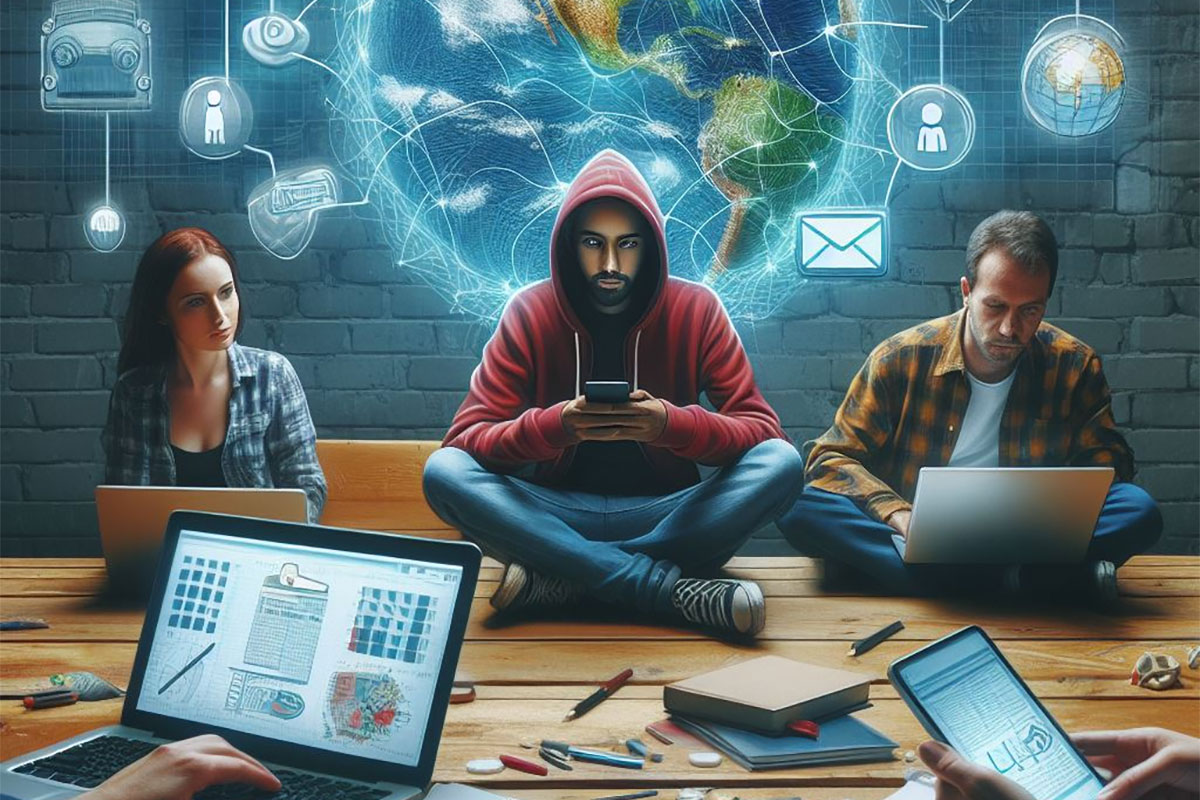The digital era’s media ecosystem is defined by the proliferation of disinformation, misinformation and fake news, both to Digital Immigrants and Digital Natives. Following Prensky’s (2001a) approach we define Digital Immigrants as the individuals who were born prior to internet services becoming ubiquitous. Due to the undeniable existence of echo-chambers, filter bubbles and algorithms in social media platforms, users rarely have the opportunity to come into contact with ideologies different from their existing ones (Shinde & Sathyaprakash, 2023). That’s why it is essential to agree that media literacy can help them filtering the news they receive and recognizing any type of the so called Information Disorder (Wardle & Derakhshan, 2017).
Scholars argue that we live in a post-truth era where facts are not believed to be true and it does not matter anymore if a news story is authentic as long as users click on it (García-Perdomo et al., 2018). This assumption makes it even more difficult for Digital Immigrants to tell truth from lies. On the other hand, the essential characteristic of the generation of digital immigrations has the interest and will to learn technologies (Zur & Walker, 2011). Keeping that in mind, it should not come as a surprise that Digital Immigrants, who have little or no exposure to technological advancements, need to possess media literacy skills the most.
Media literacy encompasses not only skills, but also knowledge structures and personal locus (Potter, 2019). Hobbs (2010) also proposed the addition of reflection and action to the core competencies of digital and media literacy to empower and support lifelong learning among users, while Michailidis (2018) proffered a conceptualization of civic media literacy, central to which is concern for the common good. In an increasingly digitalised and media-focused society, media literacy and all its areas are perceived as a civic skill whose development is a life-long process. A lack of media literacy could pose a challenge in coping with day-to-day life or exceptional periods, such as the coronavirus outbreak in spring 2020 (Rivinen et al., 2021).
Media literacy education research and practice in the United States and beyond has primarily focused on children’s and young people’s media use, practices, cultures, and media literacies as well as on the instructional methods and pedagogy of media literacy aimed for children and young people. Adults, particularly older ones, have received less attention (Abad, 2014; Hakkarainen, Hyvönen, Luksua, & Leinonen, 2009; Livingstone, Van Couvering, & Thumim, 2005; Petranova, 2013; Rasi & Kilpeläinen, 2015). As people age, not only their needs but also their interests change, and this should also be taken into account in planning and implementing media education which must be developed and maintained across all life stages (Rasi et al., 2019).
To tackle the problem of disinformation (false information is knowingly shared to cause harm), misinformation (false information is shared nut no harm is meant) and malinformation (genuine information is shared to cause harm, often by moving information designed to stay private into the public sphere) among Digital Immigrants the call for more news literacy programs has been deafening recently, and they are one solution on which almost everyone can agree (Wardle & Derakhshan, 2017). Programs all around the word (including the Thessaloniki International Media Summer Academy) that have focused on critical thinking, source evaluation and emotional manipulation have seen success and establishing such programs which are focused on providing materials and tools to Digital Immigrants are also currently leading the thinking on best practices in this area.
By Anna Orfanidou*
References
Prensky, M., 2001. Digital natives, digital immigrants part 1. On the horizon, 9(5), pp.1-6.
Shinde, P.L. and Sathyaprakash, M.R., 2023. DIGITAL IMMIGRANTS AND DIGITAL DECEPTION: CONSUMING AND COMBATING FAKE NEWS ONLINE.
García-Perdomo, V., Salaverría, R., Brown, D.K. and Harlow, S., 2018. To share or not to share: The influence of news values and topics on popular social media content in the United States, Brazil, and Argentina. Journalism studies, 19(8), pp.1180-1201. Wardle, C. and Derakhshan, H., 2017. Information disorder: Toward an interdisciplinary framework for research and policymaking (Vol. 27, pp. 1-107). Strasbourg: Council of Europe.
Zur, O. and Walker, A., 2011. On Digital Immigrants and Digital Natives, offered by Zur Institute, Inc. For Psychologists, MFTs, SWs, Nurses and Counselors. Zur Institute-Online Publication, 14.
Potter, W.J., 2019. Media literacy. 9th ed. Thousand Oaks, Sage Publications.
Hobbs, R., 2010. Digital and Media Literacy: A Plan of Action. A White Paper on the Digital and Media Literacy Recommendations of the Knight Commission on the Information Needs of Communities in a Democracy. Aspen Institute. 1 Dupont Circle NW Suite 700, Washington, DC 20036.
Mihailidis, P., 2018. Civic media literacies: Re-imagining engagement for civic intentionality. Learning, Media and Technology, 43(2), pp.152-164.
Rivinen, S., Rasi, P., Vuojärvi, H., Purtilo-Nieminen, S., Vaittinen, H., Hietajärvi, L. and Matikainen, J., 2021. Older people need media education that transcends mere digital support. The impacts of digital media on children, young adults, and senior citizens, pp.30-33.
Rasi, P., Vuojärvi, H. and Ruokamo, H., 2019. Media literacy education for all ages. Journal of Media Literacy Education, 11(2), pp.1-19.




